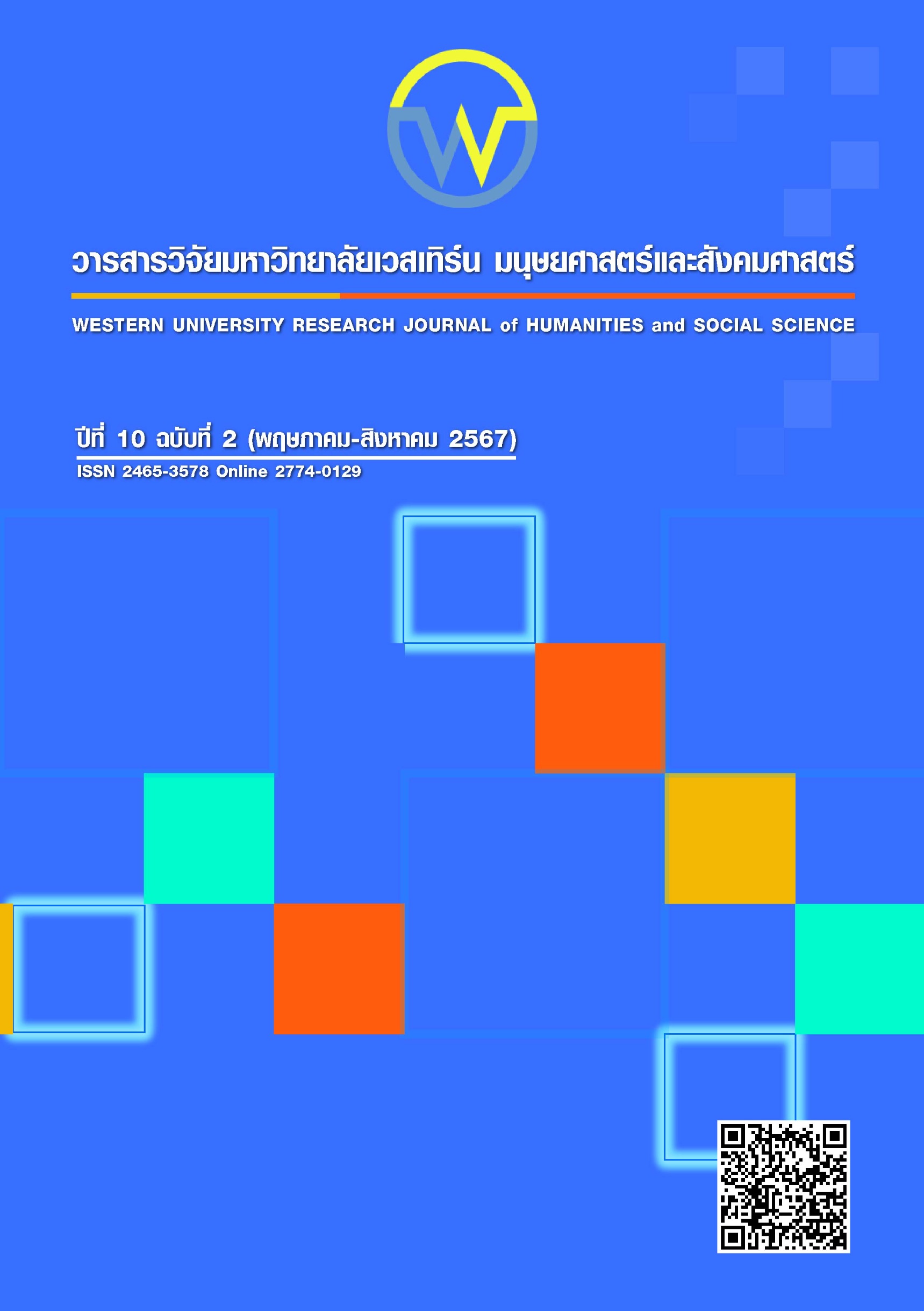Word Retention based on the Picture Word Inductive Model (PWIM) among Thailand’s Twelfth Graders
Main Article Content
บทคัดย่อ
This study investigates the effectiveness of the Picture Word Inductive Model (PWIM) in enhancing vocabulary retention among 40 twelfth-grade students which consist of 23 males and 17 females in a bilingual school in Thailand. The research aimed to address the following questions: (1) Is there a significant improvement in vocabulary retention by the use of pictures based on PWIM? (2) To what extent does the use of pictures based on PWIM facilitate the word retention rate among twelfth-grade students? The participants, aged 16 to 19, were selected using purposive sampling, focusing on students with low grades (1-2), equivalent to grades C and D in English. The tools used in the study were designed to measure different aspects of vocabulary learning and retention. A vocabulary screening test was administered to establish baseline vocabulary knowledge. Following the instructional intervention using PWIM, an immediate post-test was conducted to assess vocabulary acquisition right after the intervention. Finally, a delayed post-test was administered two weeks later to evaluate long-term retention. The results indicated significant vocabulary acquisition immediately following the PWIM intervention, which addresses the first research question. However, for the second research question, the findings showed no statistically significant differences in long-term retention between the immediate and delayed post-test scores. This suggests that while PWIM is effective for immediate vocabulary learning, its impact on long-term retention requires additional reinforcement strategies. The study discusses the implications for educational practice and suggests directions for future research.
Article Details

อนุญาตภายใต้เงื่อนไข Creative Commons Attribution-NonCommercial-NoDerivatives 4.0 International License.
เอกสารอ้างอิง
Bates, J., & Son, J. B. (2020). English Vocabulary Learning with Simplified Pictures. TESL-EJ, 24(3), 1-20.
Calhoun, E. F. (1999). Teaching beginning reading and writing with the Picture Word Inductive Model. Association for Supervision and Curriculum Development.
Chung, M. A. (2023). The efficacy of visual aids in enhancing vocabulary acquisition in EFL classes. International Journal of Social Science and Human Research, 6(10).6397-6403.
EF EPI 2024 – EF English Proficiency Index – Thailand. (2024). Retrieved Jun 21, 2024, from https://www.ef.com/ca/epi/regions/asia/thailand/
Liando, N. V. F., Tatipang, D. P., Tamboto, G., Poluan, M., & Manuas, M. (2022). Pictures as a Learning Media in Teaching Vocabulary. Jurnal Ilmiah Universitas Batanghari Jambi, 22(3), 1944-1949.
Nation, I. S. P. (2022). Learning Vocabulary in Another Language (3rd ed.). Cambridge University Press.
Pickering, H. E., Peters, J. L., & Crewther, S. G. (2023). A role for visual memory in vocabulary development: a systematic review and meta-analysis. Neuropsychology Review, 33(4), 803-833.
Schmitt, N. (2020). Vocabulary in Language Teaching. (2nd ed.). Cambridge University Press.
Tang, K. N. (2020). Challenges and importance of teaching English as a medium of instruction in Thailand International College. Journal of English as an International Language, 15(2), 97-118.


